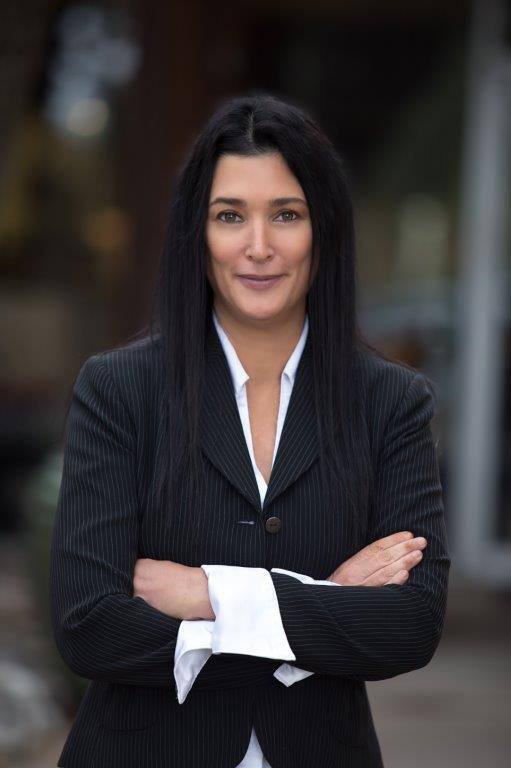 The winner of Pollak's 2018 scholarship was Susan Jablonski,
The winner of Pollak's 2018 scholarship was Susan Jablonski,
she wrote a compelling essay on what options an international students has to remain in the U.S. after graduation. We were so impressed with her essay that we would like to share it with our readers.
What Options Does an International Student Have If They Want To Remain In The United States After Graduation?
I met Stella in my Russian History class, of all places. She was from Shanghai, China, and was studying business in the United States. We did not experience much diversity in Wisconsin schools. I had always wanted to meet international students, and was attending a university in Washington D.C. for my undergraduate degree, which was the perfect place. Things I had read indicated that international students tend to stay within their particular ethnic groups, and did not venture out much to make friends in the U.S. Stella was on the shy side and we were paired up by the professor to work on a project together.
From there everything clicked, and we became the best of friends. She included me when she participated in activities with her circle of friends from China, and I did the same. We learned a lot about each other’s families and culture. At the end of our degree, Stella went home during the summer. She had been studying in the U.S. via an F-1 Visa. She had already enrolled and been accepted into Graduate School, and would be returning to the United States for the Fall semester. Although I would be studying in another state, we planned to get together once in a while for an occasional long weekend to catch up on each other’s most recent endeavors. It was something to look forward to as a reward for hard work on our studies.
During our summer break, before graduate school, I got a phone call from Stella. She seemed quite upset. One of her friends from Shanghai, our mutual friend actually, had not taken the time during her last semester to prepare documents for graduate school. She had accepted a position to work in the U.S., which had fallen through. It had never occurred to her to make plans in the event things did not work out.
Ai Chen could not return to the United States in time to find a new job, or to even think about enrolling in Graduate School in time for the Fall semester as her F-1 student had expired. I was quite shocked, and could not believe the news. Ai Chen had been so helpful to me in my finite mathematics class, and all of us had so much fun together. I really did not know the rules for international students attending school in the U.S. I remember thinking how devastated I would have been had this happened to Stella, my best friend.
Just how does an international student remain in the U.S. after graduation, and what are the options? This essay question caught my eye immediately, as I was looking for a scholarship to fund my graduate studies. I could certainly write about this! As was the case with Stella, an international student on an F-1 Visa has 60 days after graduation to enroll in another college for further study, or to apply for an Optional Practical Training (OPT) program (H1 Base, 2018).
An F-1 student visa is a non-immigration student visa which allows international students to study full-time in the U.S. Optional Practical Training (OPT) allows international undergraduate, or graduate students with F-1 status to work in the U.S. for one year in order to obtain practical training in their specific field of study (USCIS, 2018) & (Kably, 2018). Thus, the OPT program essentially allows an international student to extend their F-1 student visa for one year. There is a 24-month extension to the OPT for international students in certain STEM fields which includes degrees in engineering, mathematics, science, or technology (U.S Citizenship and Immigrations Services, 2018). During the time that a student is working under the OPT program, they are allowed to receive an income (Kably, 2018). OPT opportunities can sometimes lead to an H-1B working visa.
Obtaining H-1B status is certainly an option for an international student who has finished studies and wishes to seek temporary professional employment within the U.S. It is an employer-sponsored nonimmigrant classification which allows persons who are not permanent residents to work in professional-level occupations for up to six years (International Visa Assistance and News, 2018). Such occupations include engineering, business administration, mathematics, and the biological, physical, and social sciences. Some positions require a minimum of a bachelor’s degree, while most will require degrees at a graduate level. It may be difficult to obtain H-1B status for certain types of jobs, however; an experienced attorney can determine the applicability for H-1B status for a particular job (International Visa Assistance and News, 2018). The employer that sponsors the international student seeking H-1B status, must apply for the H-1B on behalf of the prospective employee through United States Citizenship and Immigration Services (USCIS) & (immihelp, 2018).
Students that are in the U.S. with an active F-1 student visa many times are eligible to apply for a Green Card. The Green Card allows the student to legally work in the U.S. There are various ways a student can get a Green Card. One way to do this is to obtain an employer sponsorship. Employers that meet the eligibility requirements may petition for an EB2 or EB3 visa which is called and Employment-Based Green Card. If a student has a relative that has a business in the U.S., this would be an additional type of employer sponsorship, although more difficult to obtain. Another option in obtaining a Green Card from an F-1 student visa, is to enter a Green Card Lottery. This means that there are a limited number of available Green Cards. If a student with F-1 status happens to be from a country at war, or that student feels that returning to her native country would put her life in jeopardy, then that student may be able to obtain a Green Card by petitioning for asylum. Of course, marrying a U.S. citizen is also a legal way for a student with F-1 status to obtain a Green Card (Lee-Pollak, 2017).
In the event an F-1 visa has expired, as was the case with Ai Chen, the international student must apply for a new F-1 visa at an American consulate prior to re-entering the U.S. At times international students may not realize that they are in violation of the terms of their F-1 Visa. This can be due to various reasons such as not renewing a passport on time or failing to pursue a full course of studies. If this happens, a student can apply for a reinstatement. Chances of a successful reinstatement of F-1 status is easier if the international student does not have a history of violation of USCIS rules. It is always best to make sure F-1 status in not compromised, as the waiting period for reinstatement can be anywhere between three and four months (Regaining F-1 Status, 2018).
Keep in mind that there are various options for international students who wish to remain in the United States after graduating. If the student has obtained a bachelor’s degree, they can go on to pursue a Graduate degree, or a Ph.D. If an international student wishes to extend their stay and work in the U.S., it is important that they plan ahead and research all of the available options. Again, the best ways to remain in the U.S. after graduation are the F-1 Visa OPT which allows temporary employment directly related to a student’s major. F-1 students can apply to receive up to 12 months of total OPT employment authorization. There is a 24-month extension granted with the OPT for students in certain STEM fields.
Obtaining H-1B status can result in opportunities for the international student who wishes to work in the U.S. for an extended period of time in professional-level occupations. And, for the international student who desires to remain in the U.S. after graduation on a permanent basis, there is the Green Card which can be obtained via employer sponsorship, through a lottery, by marriage, or by petitioning for asylum. The international student should always protect her F-1 status by keeping deadlines in mind, as well as other requirements so that the visa does not expire or become void due to violation of rules. It is far better to protect this status than than to have to apply for a new F-1 visa, or a reinstatement. In doing so, one is able to realize their dreams and aspirations and secure a promising future.
I am so fortunate to have Stella as my friend. I am glad that she had an attorney to explain all of the ramifications of being an international student in the U.S., and how to maintain her F-1 status. Laws regarding protocol for international students are constantly changing. It can be invaluable to be fully informed by an experienced attorney who knows all of the necessary laws and how they apply to the student’s native country.
References
H1 Base, “F1 Visa – to Study in the USA”, (2018)., website: h1base.com
U.S. Citizenship and Immigration Services, “Optional Practical Training (OPT) for F-1 Students”, (2018)., website: uscis.gov
Immihelp, “H1 visa requirements”, (2018)., website: immihelp.com
Kably, L., “US Restricts Job Options for International STEM Students under OPT Extension”, The Times of India World, TNN, (2018)., website: timesofindia.indiatimes.com
International Visa Assistance and News, “US H-1B Visa for Specialty Workers”, (2018)., website: workpermit.com
Lee-Pollak, K., “5 Options to Get from F1 Student Visa to Green Card”, Pollak PLLC, TX, (2017)., website: pollak.immigration.com
International Student Services, “Regaining F-1 Status”, University of Washington, Seattle, (2018)., website: iss.washington.edu




